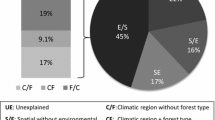Abstract
RECENT quantitative analyses of the microfauna of the soil have shown that oribatid mites are by far the largest representatives. Their economic value is well known; they carry the infective stages of anoplocephaline cestodes, some of which are important parasites of sheep. Attention has recently been directed to their role in the promotion of humus formation from leaf litter on the forest floor, and at the same time it was pointed out that little was known of the biology of these mites1.
Similar content being viewed by others
References
Report on Forestry Research for the Year ending March 1950 (H.M. Stationery Offiee, 1951).
Jones, B. M., Nature, 166, 823 (1950).
Jones, B. M. (private communication).
Michael, A. D., “British Oribatidæ” (Ray Society, London, 1883).
Author information
Authors and Affiliations
Rights and permissions
About this article
Cite this article
CLEAT, N. Growth in the Laboratory of Economically Important Oribatid Mites. Nature 169, 280–281 (1952). https://doi.org/10.1038/169280b0
Issue Date:
DOI: https://doi.org/10.1038/169280b0
- Springer Nature Limited
This article is cited by
-
Toxicological evaluation of genetically modified cotton (Bollgard®) and Dipel® WP on the non-target soil mite Scheloribates praeincisus (Acari: Oribatida)
Experimental and Applied Acarology (2007)




